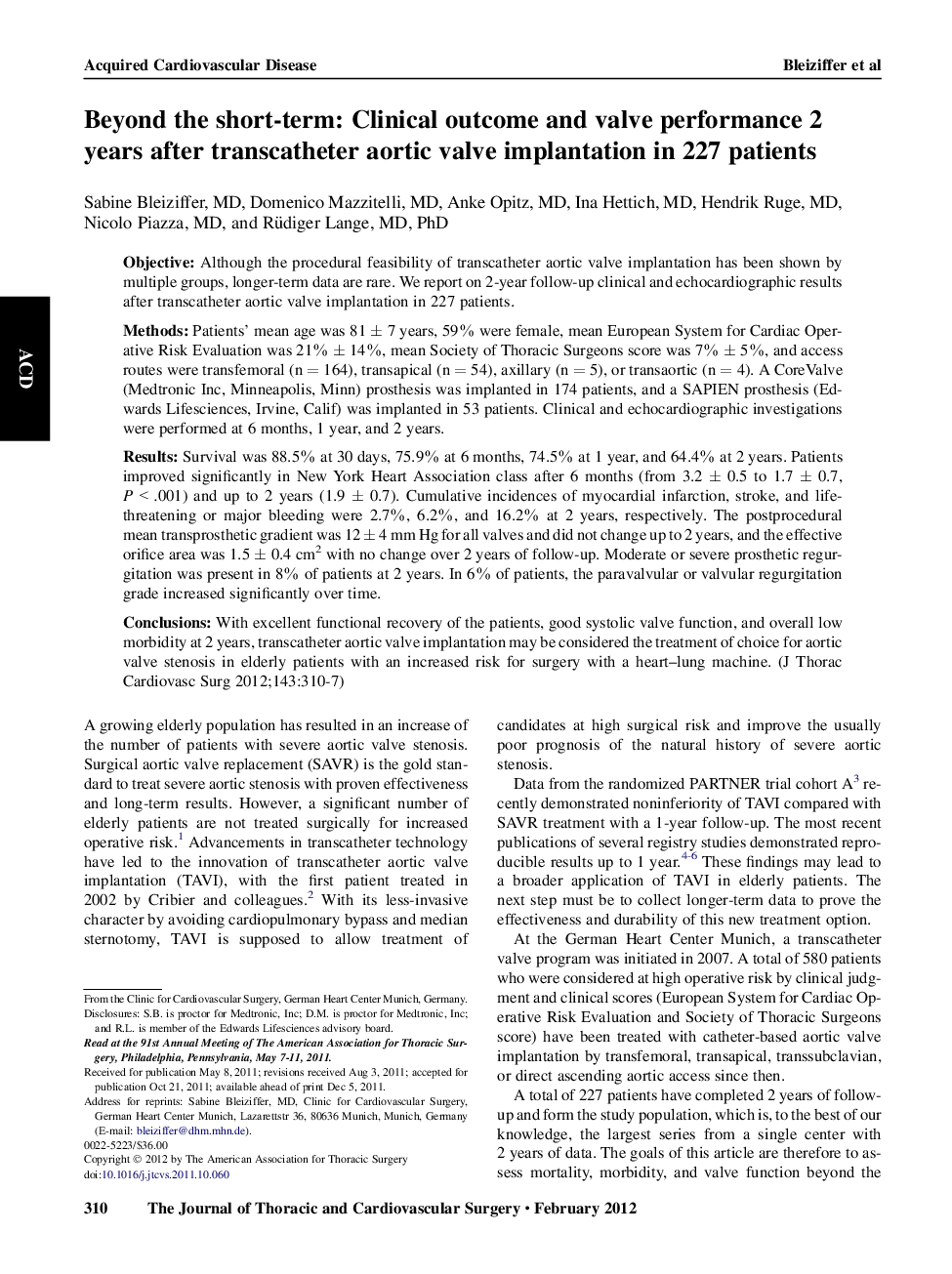| کد مقاله | کد نشریه | سال انتشار | مقاله انگلیسی | نسخه تمام متن |
|---|---|---|---|---|
| 2981442 | 1578640 | 2012 | 8 صفحه PDF | دانلود رایگان |

ObjectiveAlthough the procedural feasibility of transcatheter aortic valve implantation has been shown by multiple groups, longer-term data are rare. We report on 2-year follow-up clinical and echocardiographic results after transcatheter aortic valve implantation in 227 patients.MethodsPatients’ mean age was 81 ± 7 years, 59% were female, mean European System for Cardiac Operative Risk Evaluation was 21% ± 14%, mean Society of Thoracic Surgeons score was 7% ± 5%, and access routes were transfemoral (n = 164), transapical (n = 54), axillary (n = 5), or transaortic (n = 4). A CoreValve (Medtronic Inc, Minneapolis, Minn) prosthesis was implanted in 174 patients, and a SAPIEN prosthesis (Edwards Lifesciences, Irvine, Calif) was implanted in 53 patients. Clinical and echocardiographic investigations were performed at 6 months, 1 year, and 2 years.ResultsSurvival was 88.5% at 30 days, 75.9% at 6 months, 74.5% at 1 year, and 64.4% at 2 years. Patients improved significantly in New York Heart Association class after 6 months (from 3.2 ± 0.5 to 1.7 ± 0.7, P < .001) and up to 2 years (1.9 ± 0.7). Cumulative incidences of myocardial infarction, stroke, and life-threatening or major bleeding were 2.7%, 6.2%, and 16.2% at 2 years, respectively. The postprocedural mean transprosthetic gradient was 12 ± 4 mm Hg for all valves and did not change up to 2 years, and the effective orifice area was 1.5 ± 0.4 cm² with no change over 2 years of follow-up. Moderate or severe prosthetic regurgitation was present in 8% of patients at 2 years. In 6% of patients, the paravalvular or valvular regurgitation grade increased significantly over time.ConclusionsWith excellent functional recovery of the patients, good systolic valve function, and overall low morbidity at 2 years, transcatheter aortic valve implantation may be considered the treatment of choice for aortic valve stenosis in elderly patients with an increased risk for surgery with a heart–lung machine.
Journal: The Journal of Thoracic and Cardiovascular Surgery - Volume 143, Issue 2, February 2012, Pages 310–317